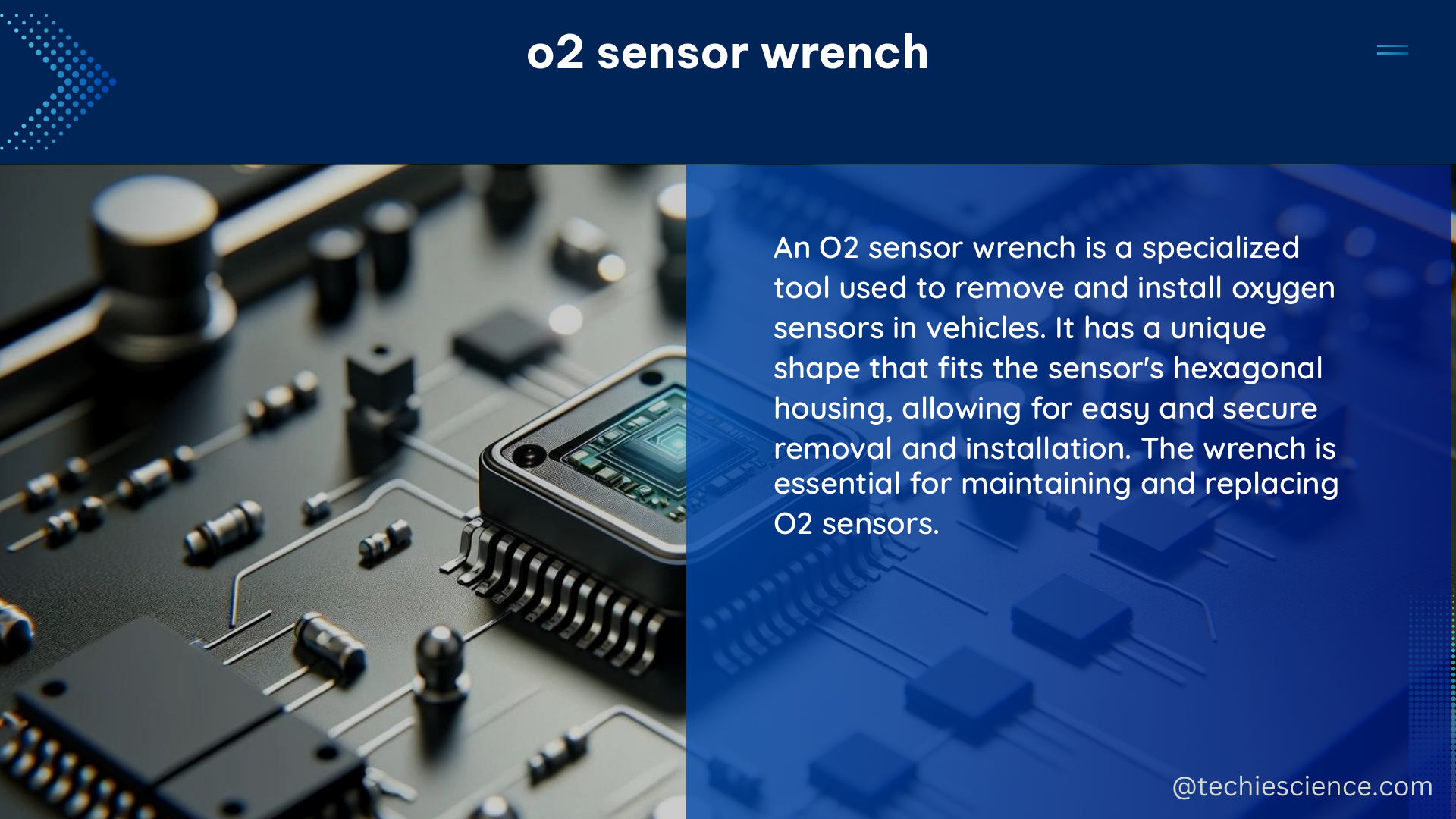The O2 sensor wrench is a specialized tool used to remove and install oxygen sensors in vehicles. These sensors play a crucial role in monitoring the air-fuel mixture in the engine and ensuring the proper functioning of the catalytic converter. Understanding the intricacies of O2 sensor wrenches is essential for any automotive enthusiast or DIY mechanic.
Understanding O2 Sensor Wrenches
O2 sensor wrenches come in a variety of sizes, with the most common being 3/8-inch and 7/8-inch. The size of the wrench is determined by the specific design and dimensions of the oxygen sensor being serviced. Using the correct size wrench is crucial to avoid damaging the sensor during removal or installation.
Wrench Sizes and Compatibility
| Wrench Size | Sensor Thread Size |
|---|---|
| 3/8-inch | 18mm x 1.5 |
| 7/8-inch | 22mm x 1.5 |
It’s important to note that some vehicles may use different sensor thread sizes, so it’s always best to consult the manufacturer’s specifications or a repair manual to ensure you have the correct wrench size.
Preparing for O2 Sensor Replacement

Before attempting to remove an O2 sensor, it’s recommended to soak the sensor in a penetrating oil, such as PB Blaster, for at least 15 minutes. This can help loosen the sensor and make it easier to remove without rounding off the edges.
Necessary Tools and Supplies
- O2 sensor wrench (3/8-inch or 7/8-inch, depending on the sensor)
- Socket set (to remove the sensor from the exhaust system)
- Penetrating oil (e.g., PB Blaster)
- Torque wrench (to properly tighten the new sensor)
- Anti-seize compound (to prevent the new sensor from seizing in the future)
Removing and Installing O2 Sensors
- Locate the O2 sensor in the exhaust system. This is typically located upstream or downstream of the catalytic converter.
- Soak the sensor in penetrating oil for at least 15 minutes to help loosen it.
- Using the appropriate O2 sensor wrench, carefully turn the sensor counterclockwise to loosen it.
- Once the sensor is loosened, use the socket set to remove it completely from the exhaust system.
- Apply a small amount of anti-seize compound to the threads of the new O2 sensor.
- Insert the new sensor and hand-tighten it.
- Using the O2 sensor wrench, tighten the sensor to the manufacturer’s specified torque, typically between 20-40 Nm (15-30 ft-lb).
Torque Specifications
Proper torque is crucial when installing a new O2 sensor to ensure a secure and leak-free connection. Refer to the manufacturer’s recommendations or a repair manual for the specific torque specifications for your vehicle.
Diagnosing Engine Performance with O2 Sensors
In addition to their mechanical function, O2 sensors play a crucial role in diagnosing engine performance issues. By monitoring the voltage output of the sensors before and after the catalytic converter, technicians can determine if the engine is running too lean or too rich.
Lean vs. Rich Running Conditions
- Lean running condition: The engine is running with an air-fuel mixture that is too lean, causing the engine to run hot and potentially damage the catalytic converter.
- Rich running condition: The engine is running with an air-fuel mixture that is too rich, causing the engine to run poorly and produce excessive emissions.
Using OBD2 Meters for Diagnosis
When diagnosing engine performance issues, it’s essential to use the correct OBD2 meter to read the live data from the O2 sensors. This data can help identify issues with the engine’s air-fuel mixture and catalytic converter performance. By monitoring the voltage output of the O2 sensors, technicians can determine if the sensors are functioning correctly and if any further diagnostic tests are needed.
Conclusion
The O2 sensor wrench is a critical tool for any automotive enthusiast or DIY mechanic. Understanding the proper use and maintenance of these wrenches, as well as the role of O2 sensors in engine performance, is essential for ensuring the efficient and reliable operation of your vehicle. By following the guidelines and best practices outlined in this comprehensive guide, you can confidently tackle O2 sensor replacement and engine diagnostics with confidence.
References
- Using O2 Sensor Data in Diagnostics – YouTube, https://www.youtube.com/watch?v=pCEWdCaFvLg
- Need help finding the right O2 sensor socket to change O2 sensors, https://www.reddit.com/r/MechanicAdvice/comments/w2ut2o/need_help_finding_the_right_o2_sensor_socket_to/
- Microfluidic-Based Oxygen (O2) Sensors for On-Chip Monitoring of …, https://www.ncbi.nlm.nih.gov/pmc/articles/PMC8774018/
- Reading OBD2 Live Data Part 3 (Testing 02 Oxygen sensors), https://www.youtube.com/watch?v=T8r3Ngi-AoE
- Oxygen Sensor Wrenches, help!!!!!, https://www.trailvoy.com/threads/oxygen-sensor-wrenches-help.93051/

The lambdageeks.com Core SME Team is a group of experienced subject matter experts from diverse scientific and technical fields including Physics, Chemistry, Technology,Electronics & Electrical Engineering, Automotive, Mechanical Engineering. Our team collaborates to create high-quality, well-researched articles on a wide range of science and technology topics for the lambdageeks.com website.
All Our Senior SME are having more than 7 Years of experience in the respective fields . They are either Working Industry Professionals or assocaited With different Universities. Refer Our Authors Page to get to know About our Core SMEs.